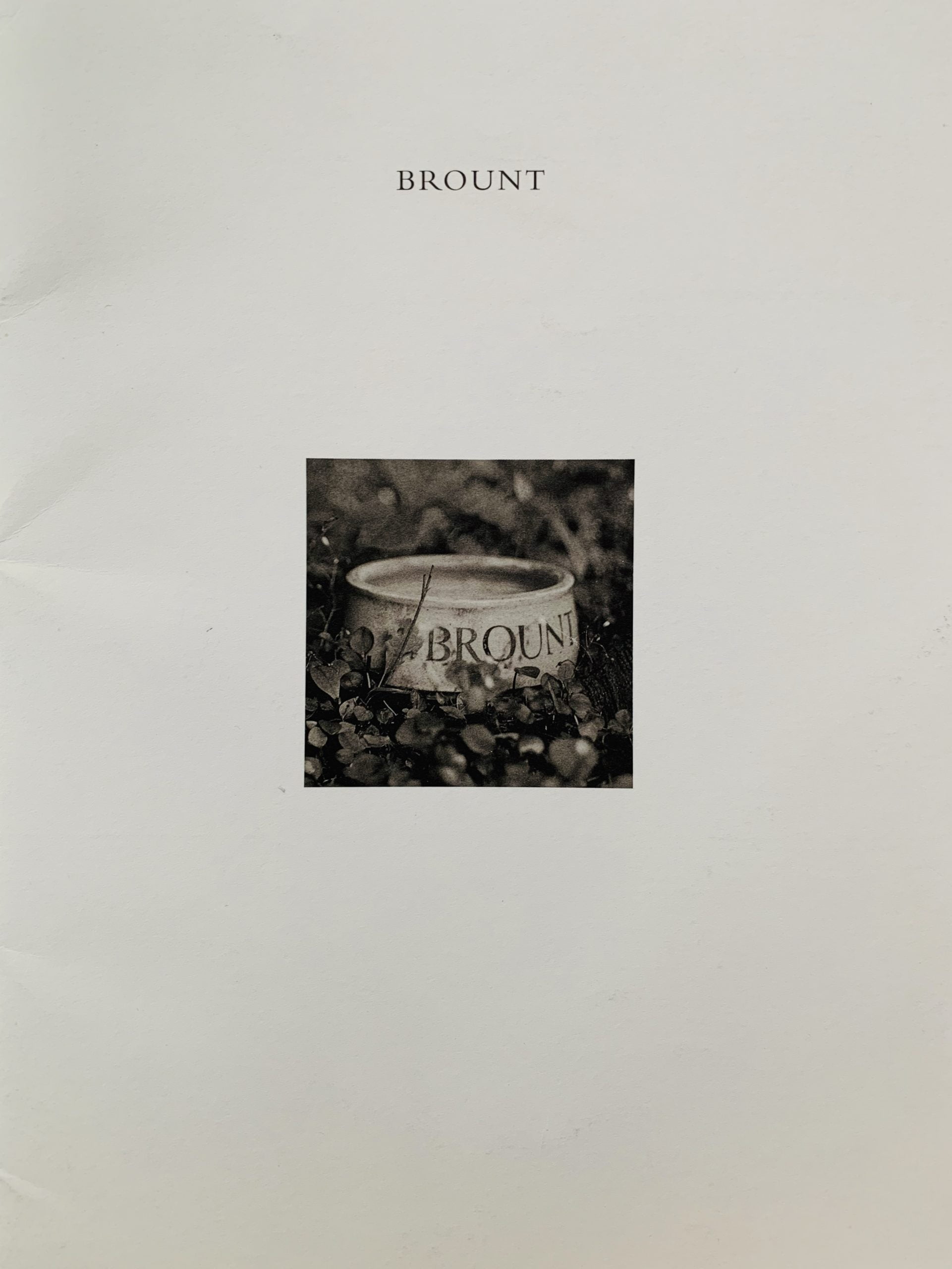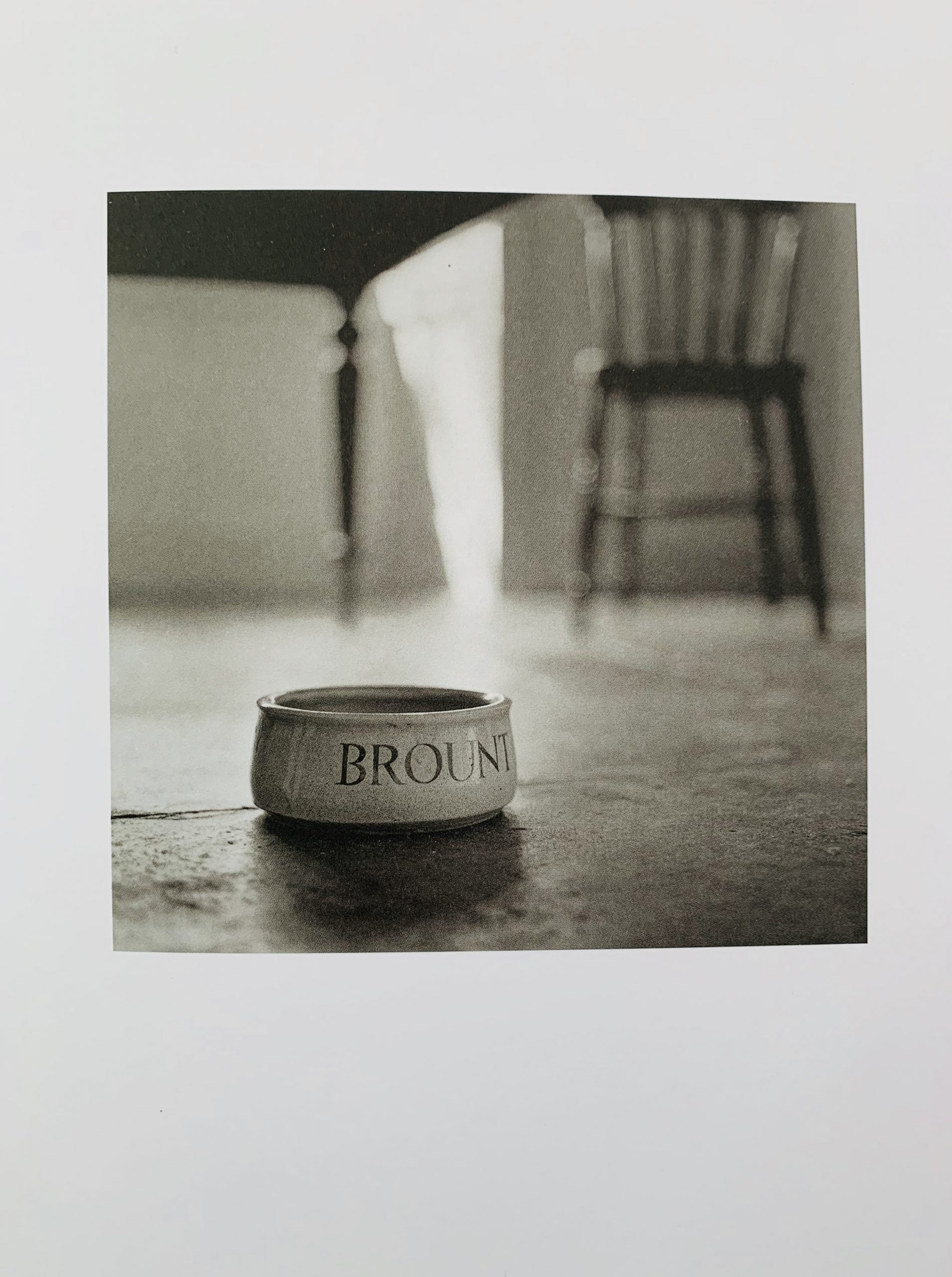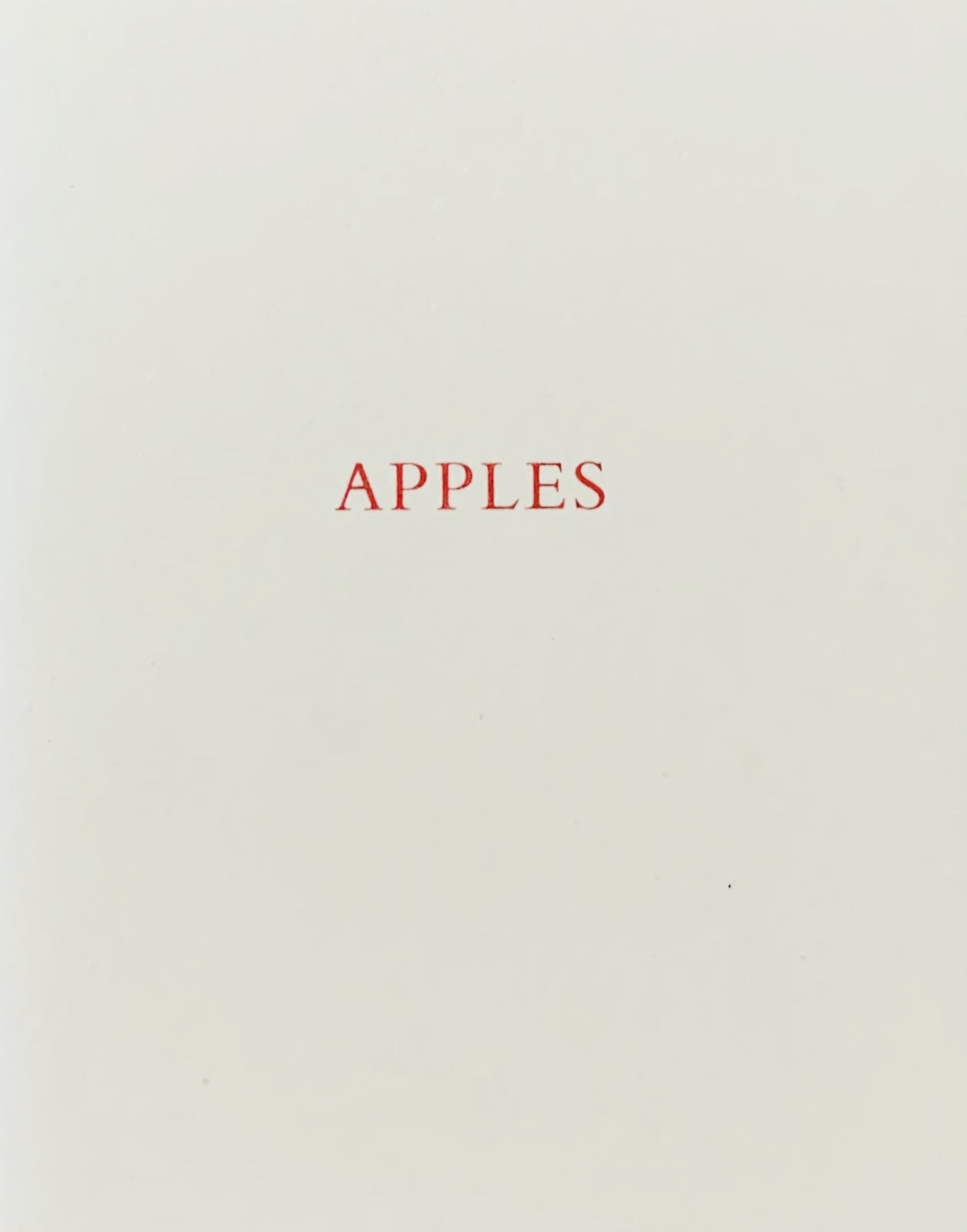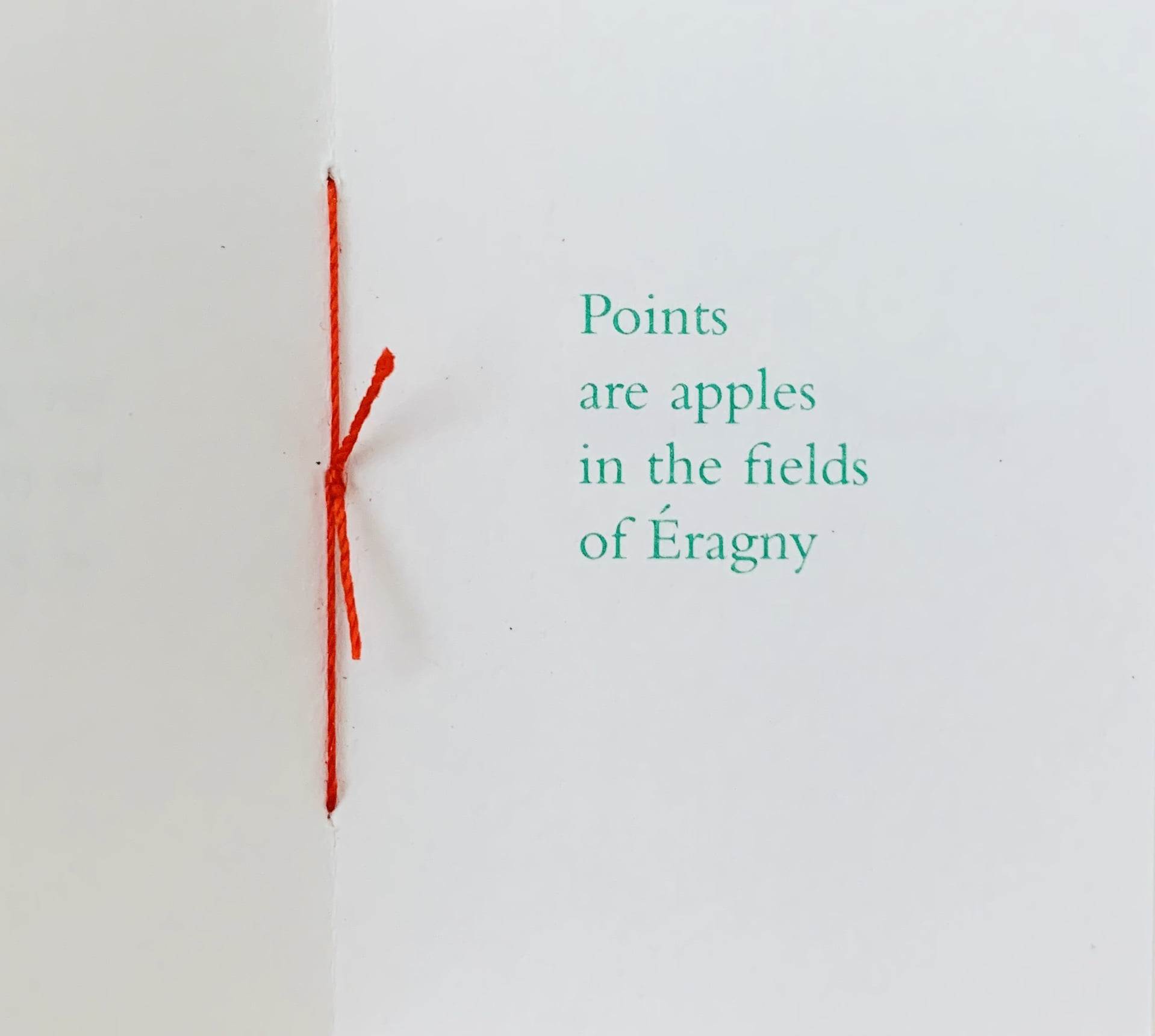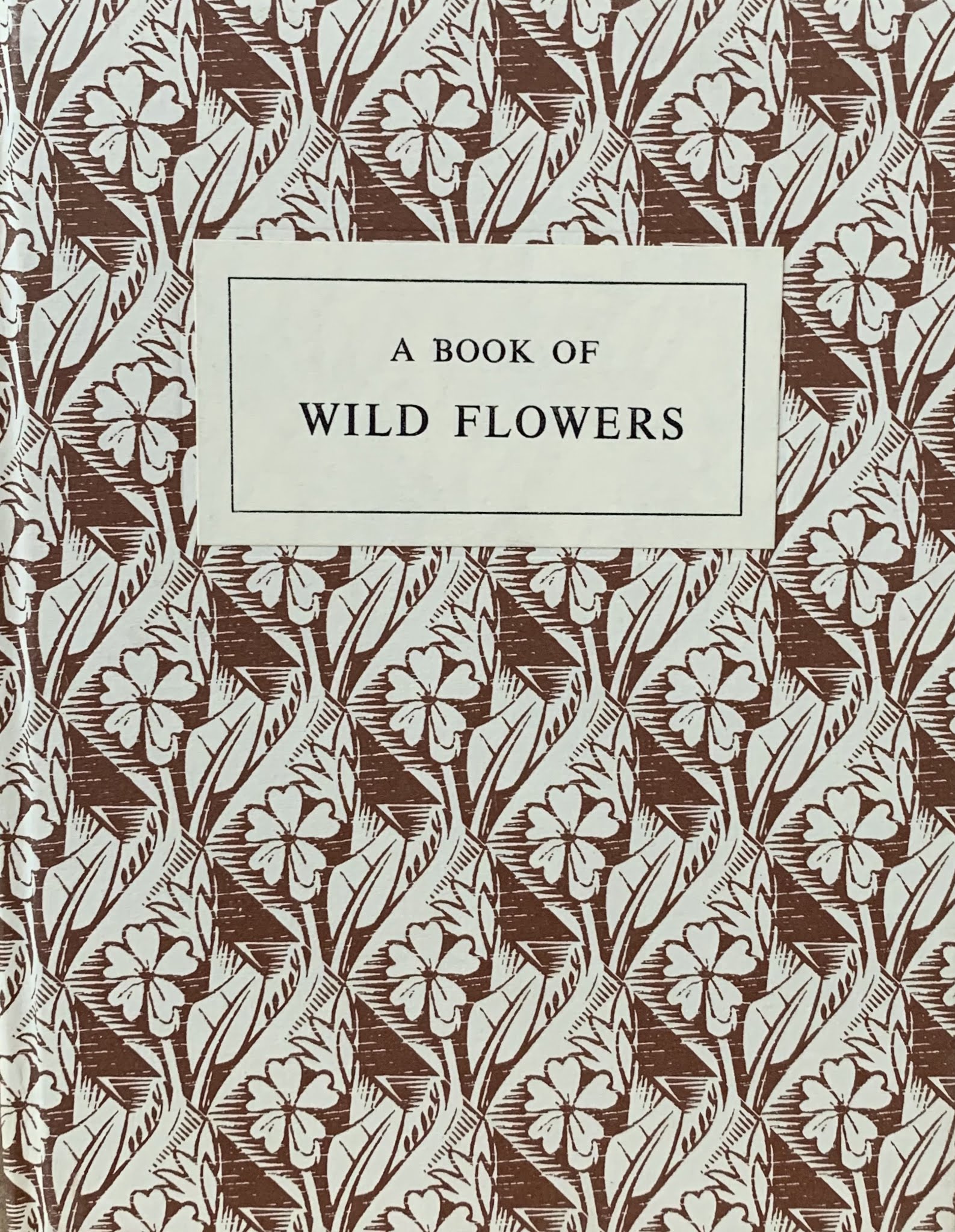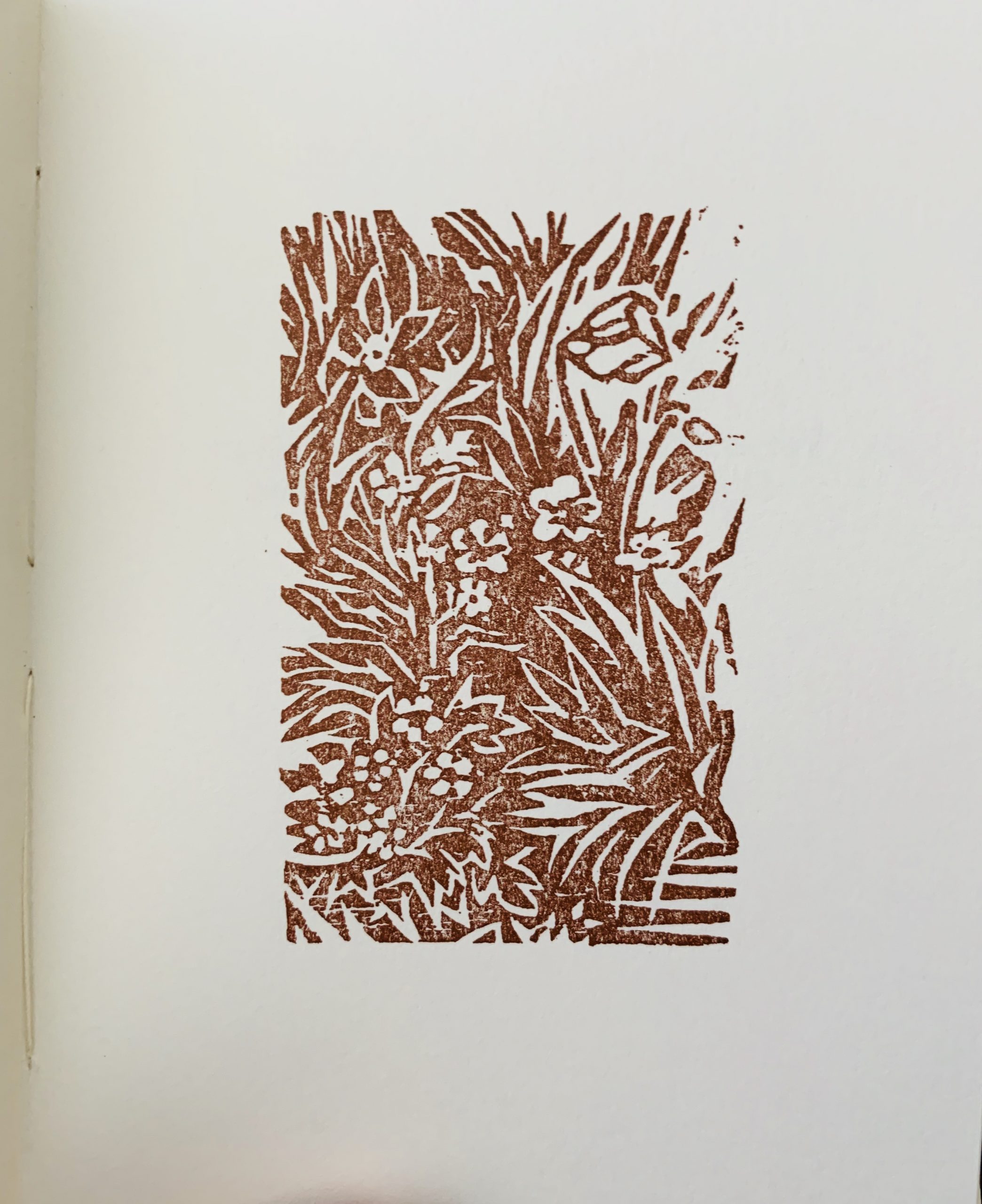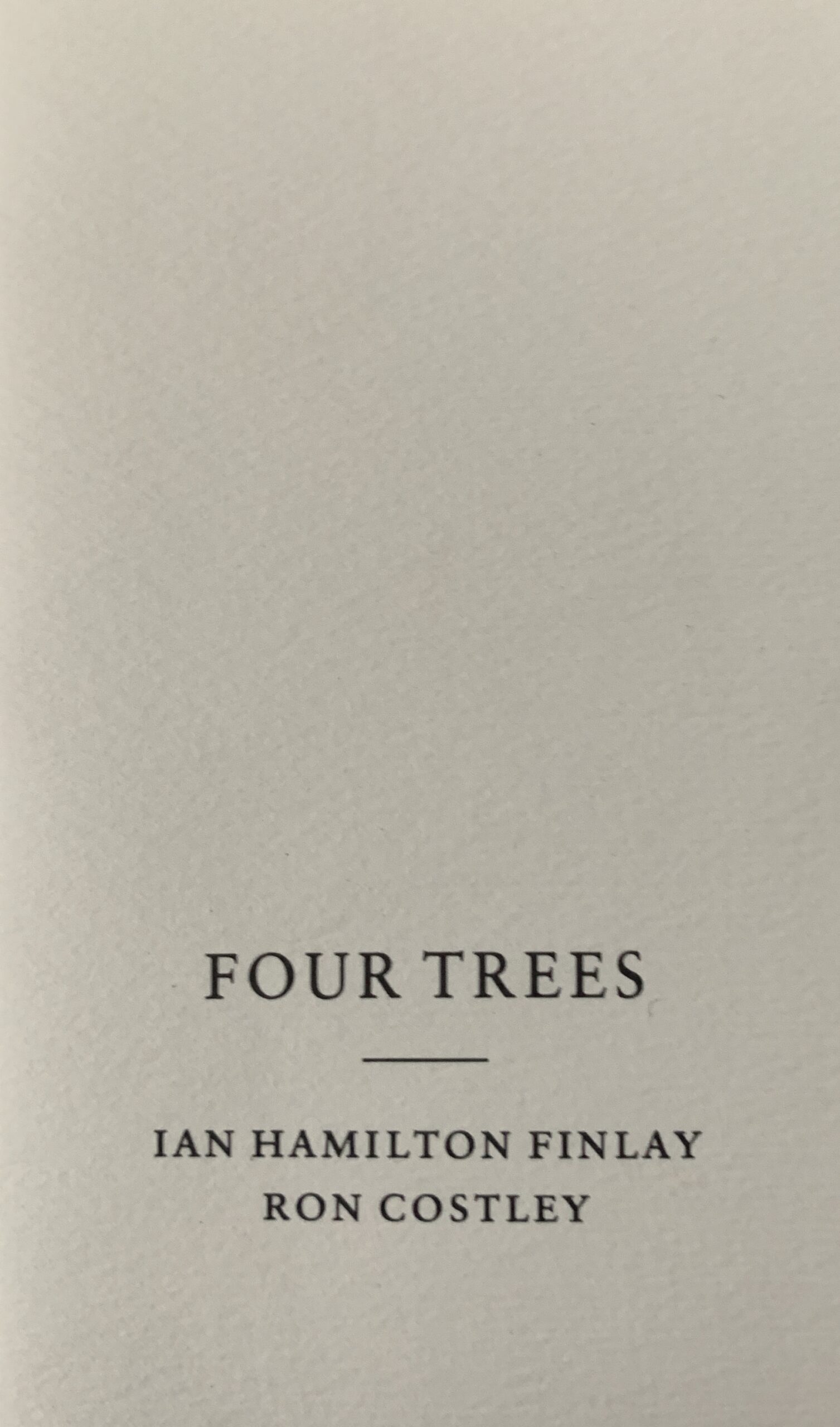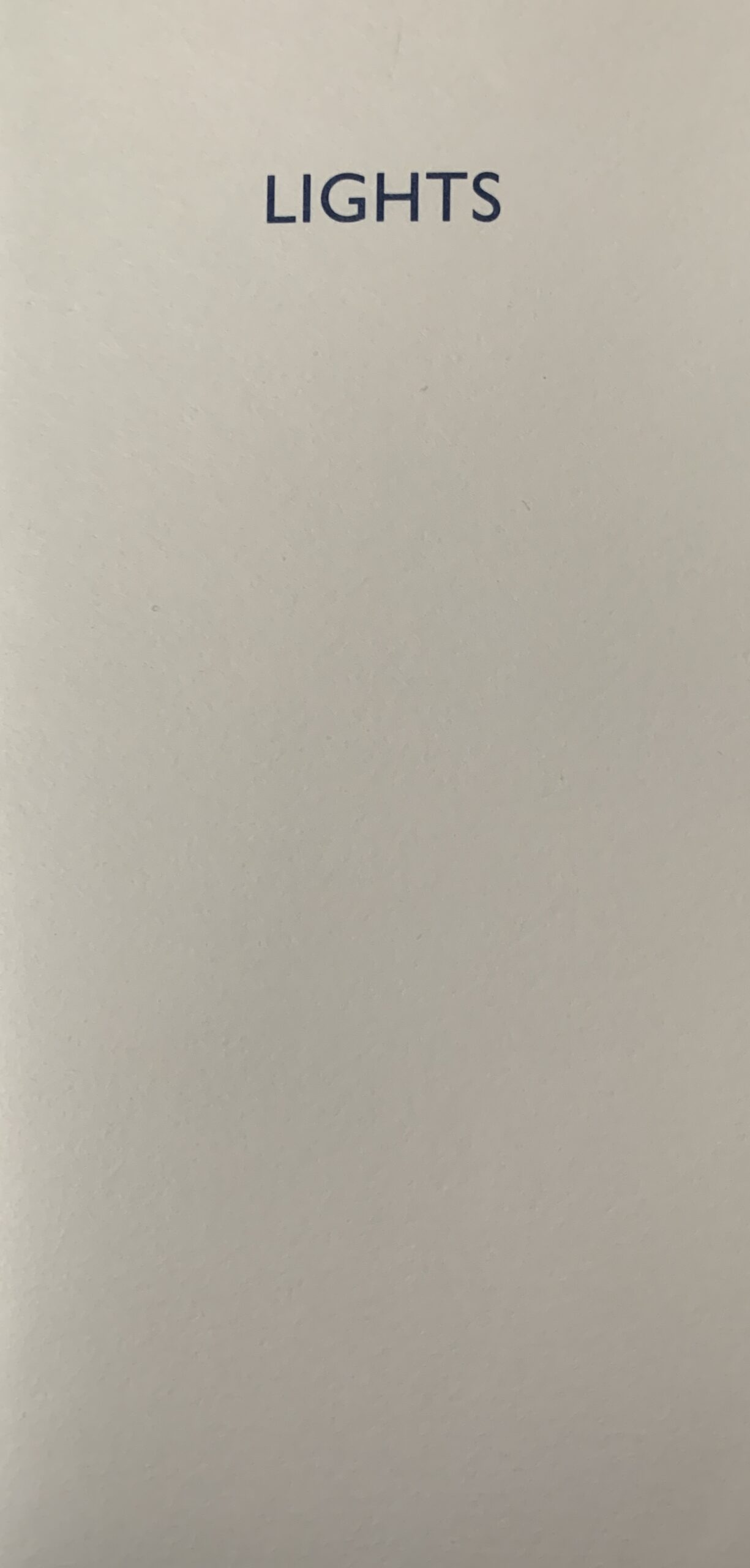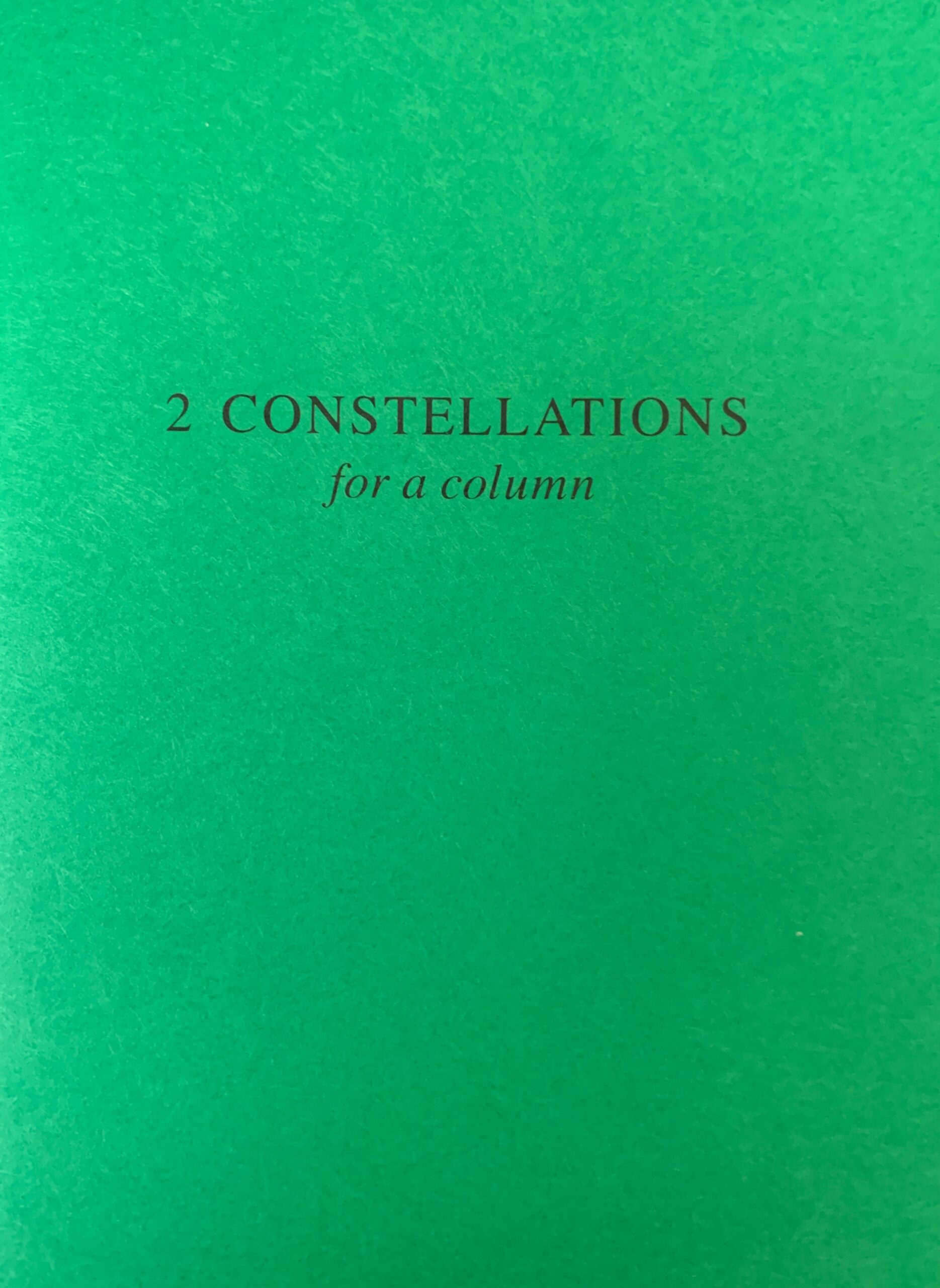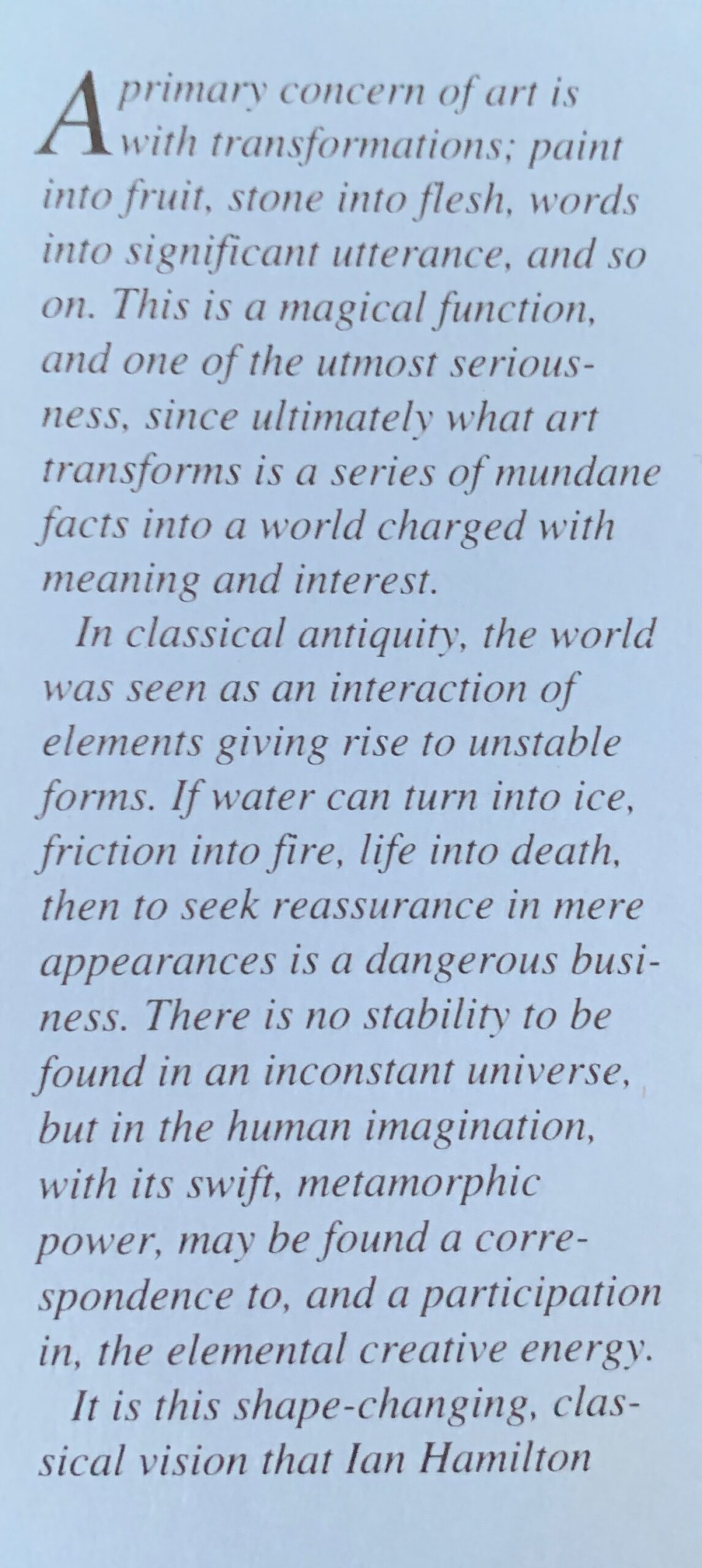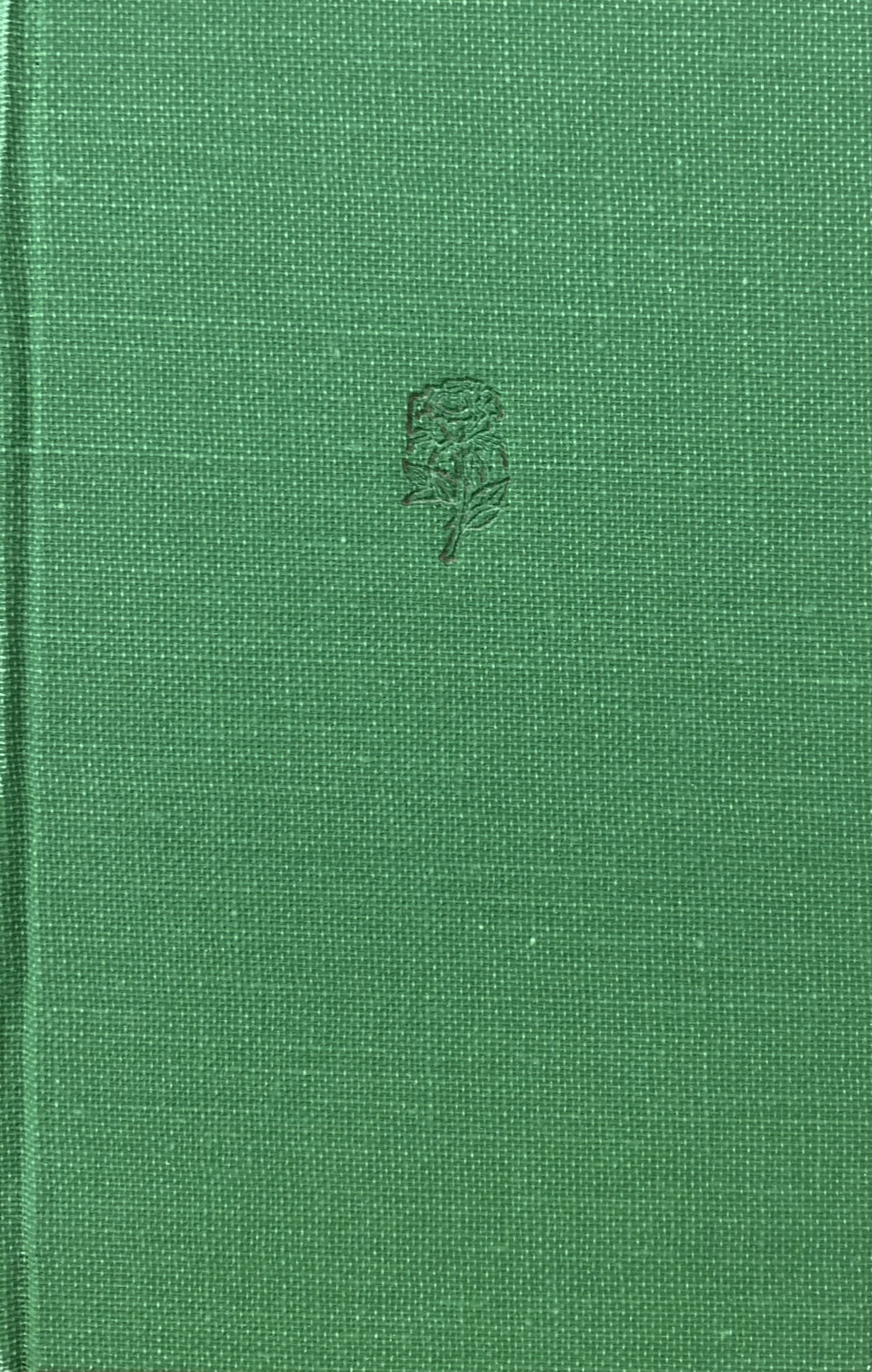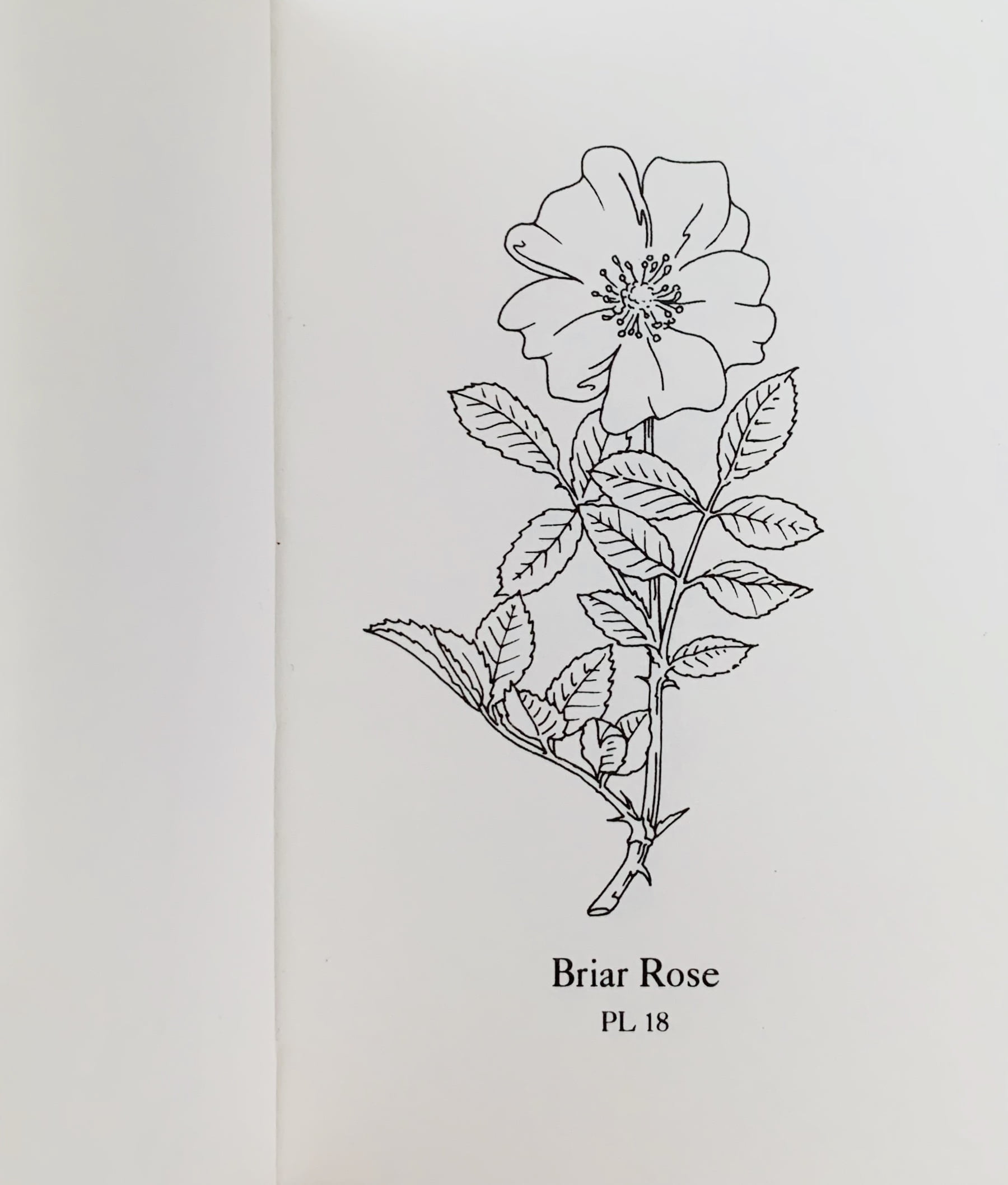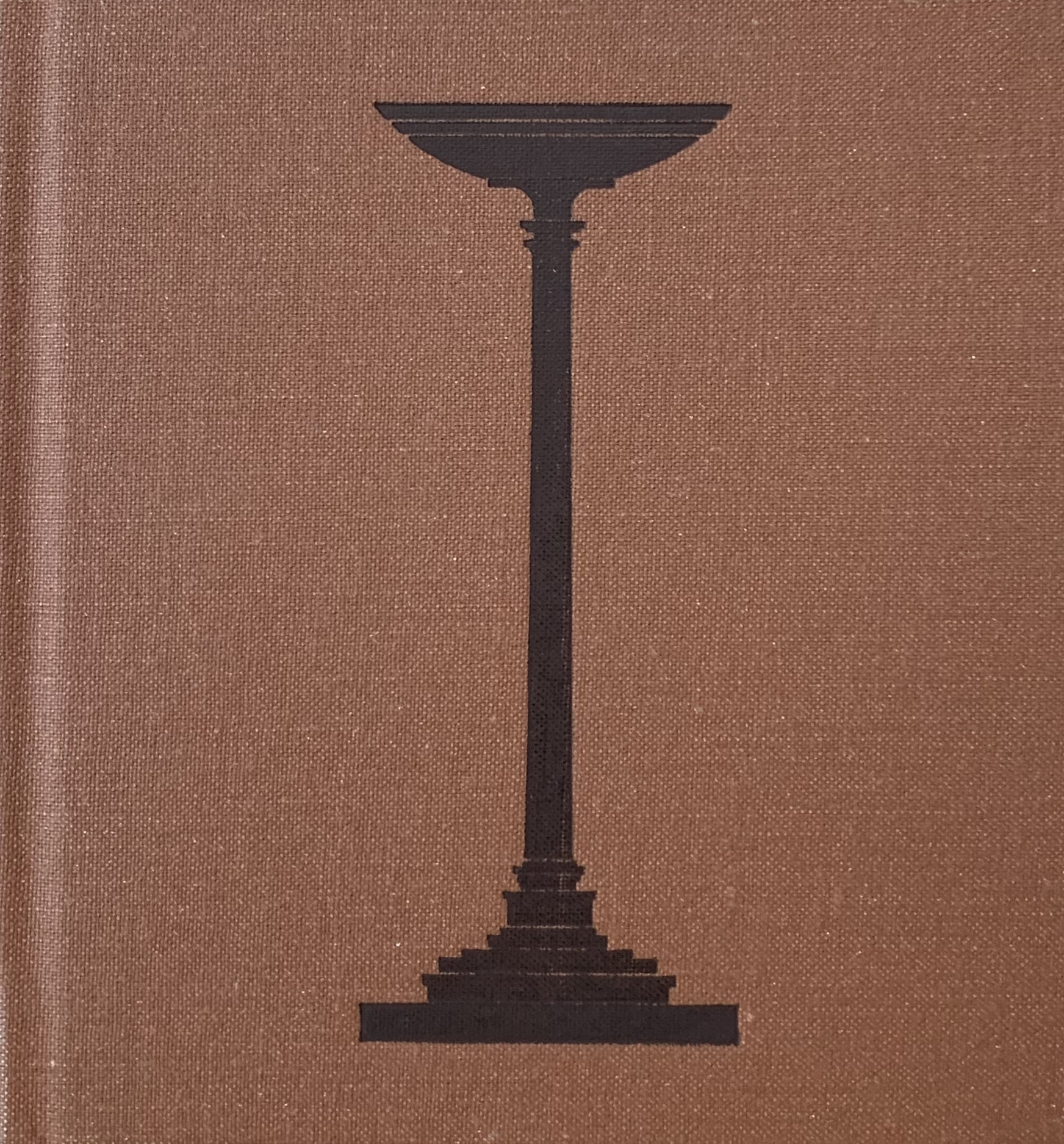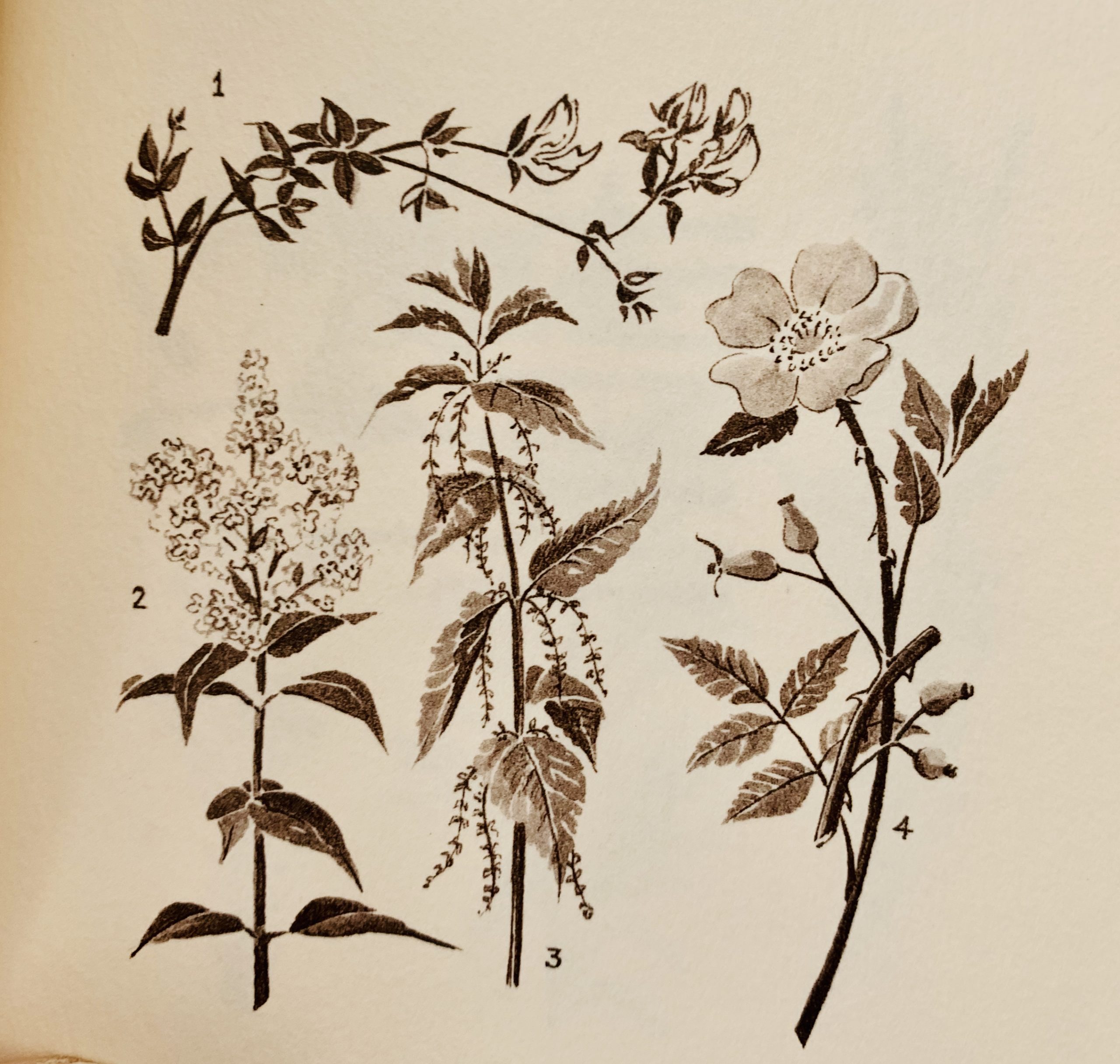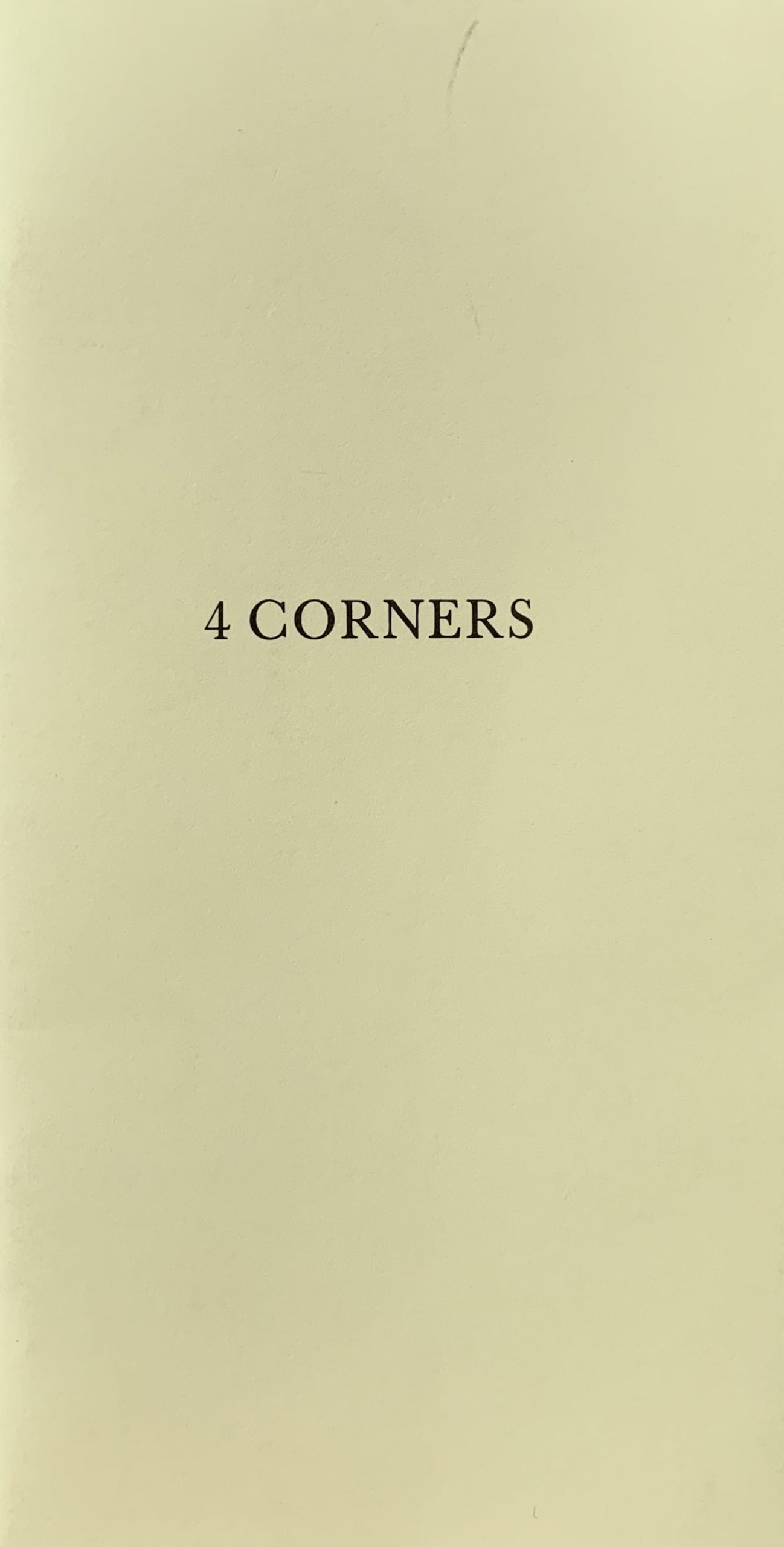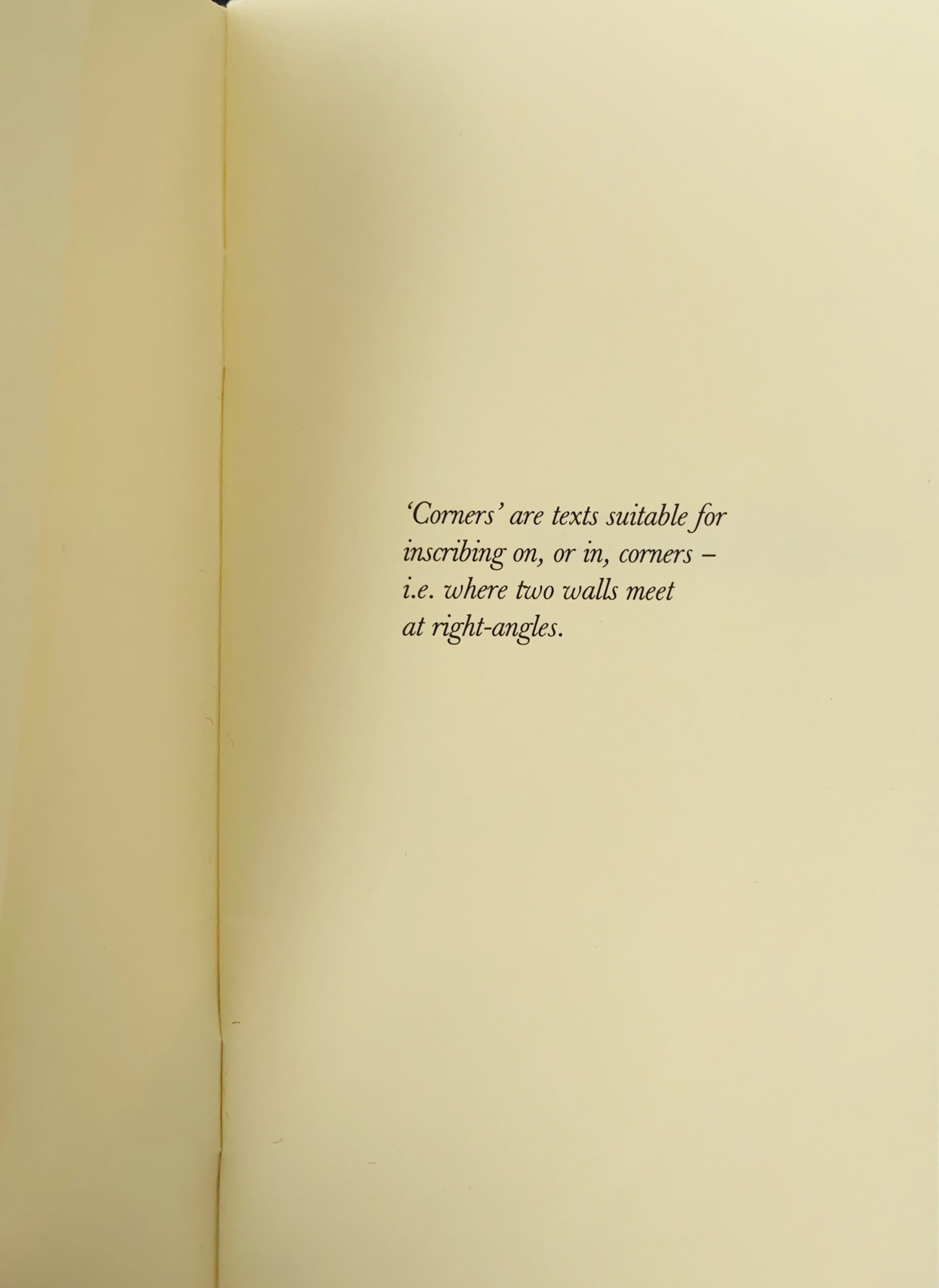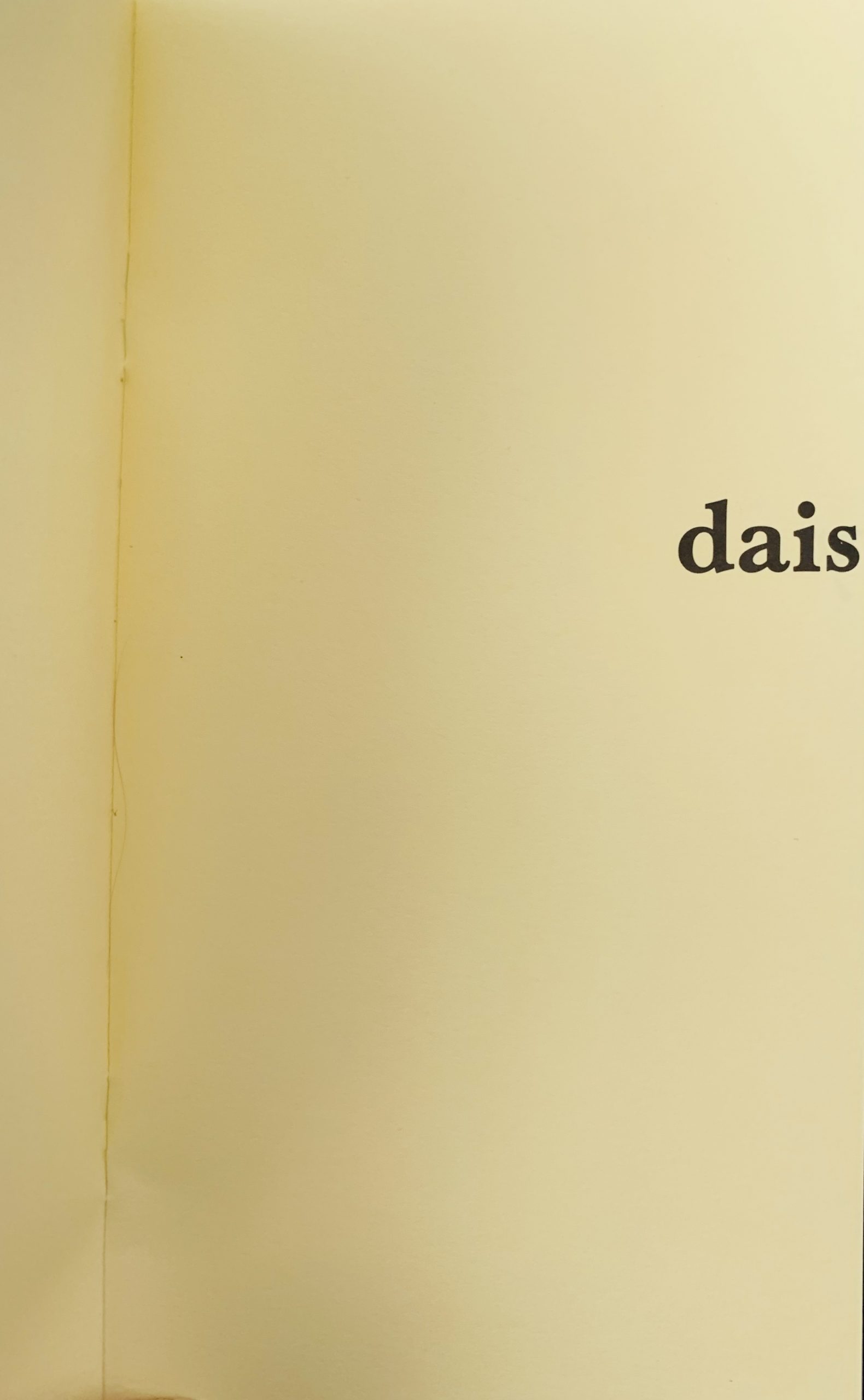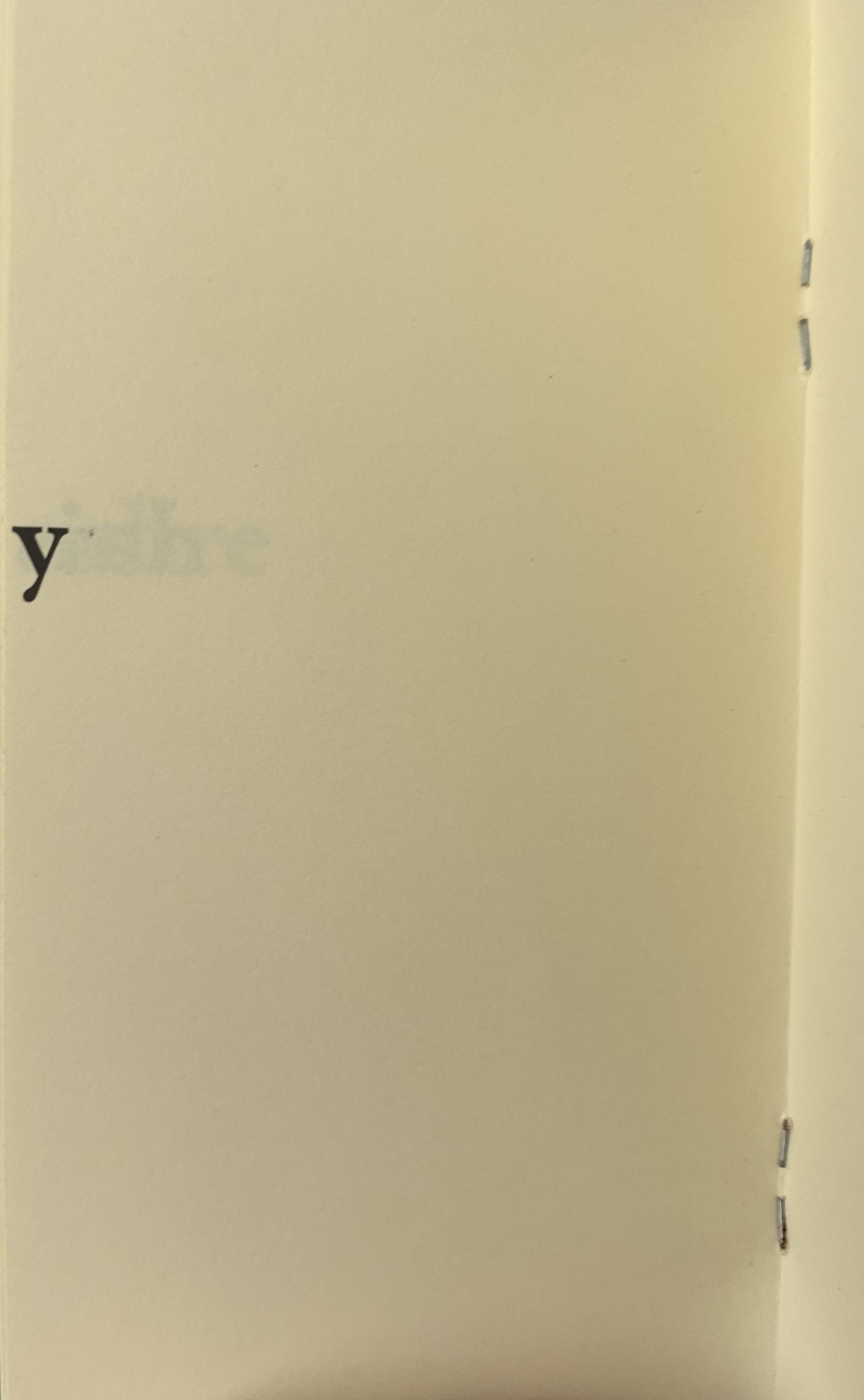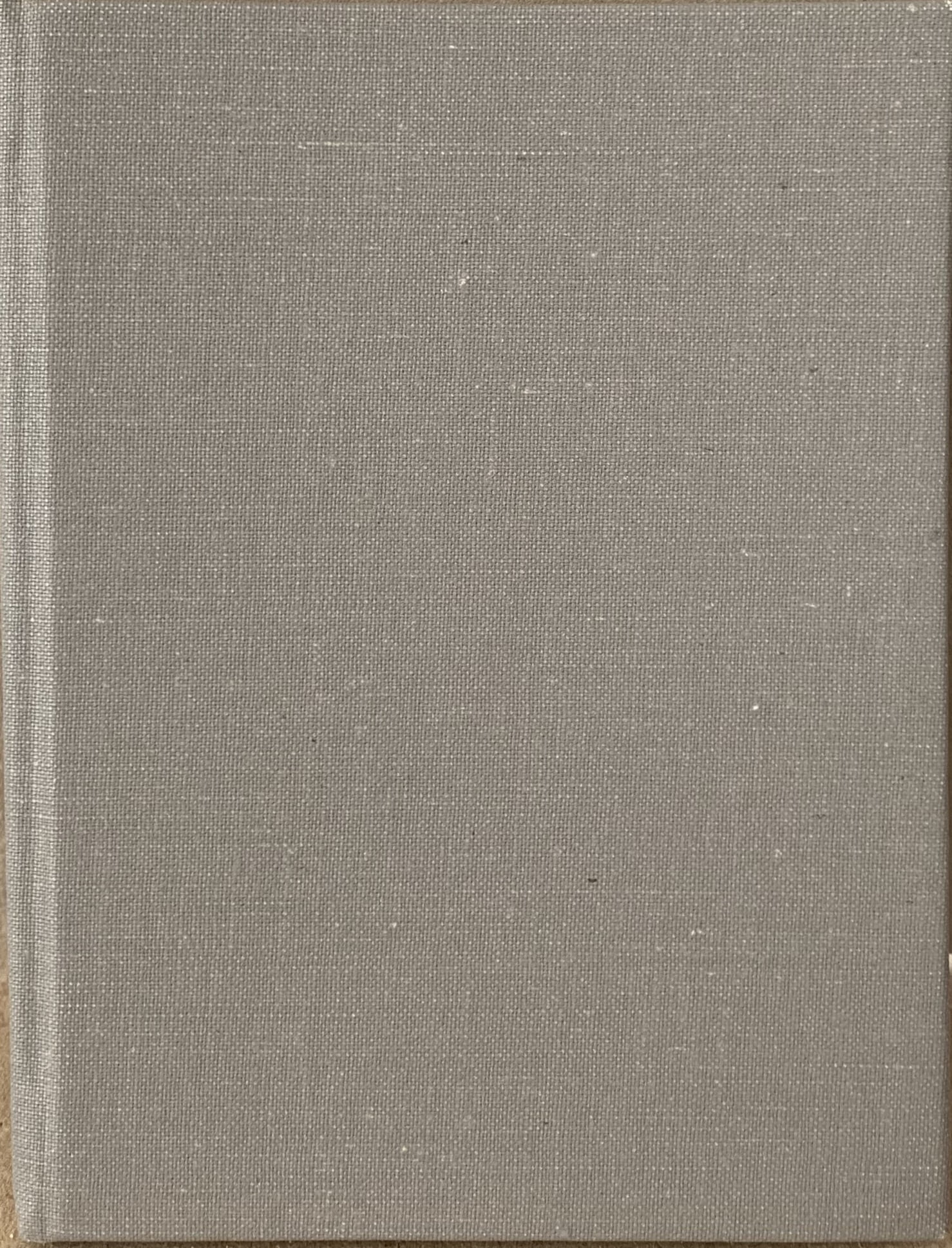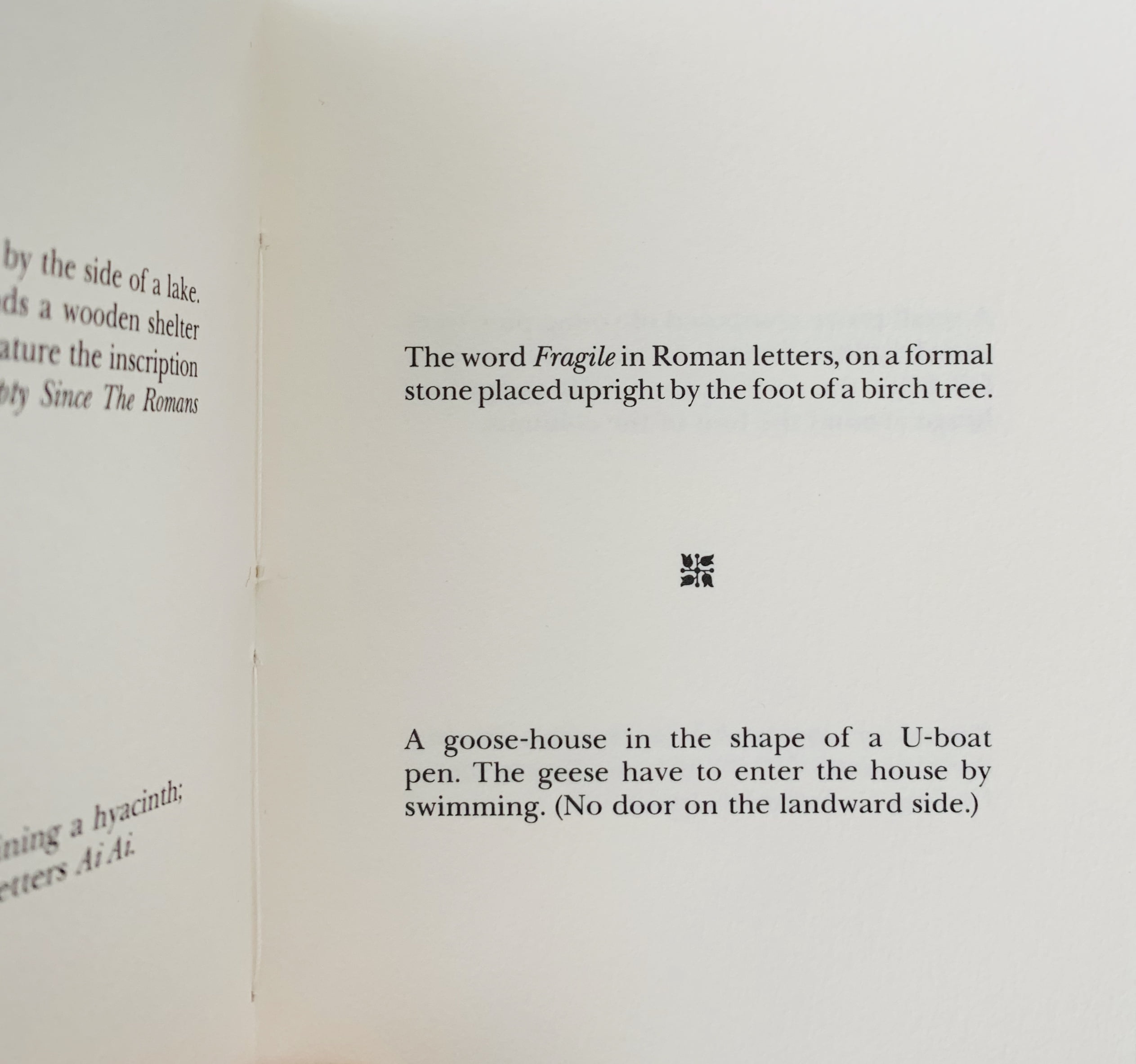Posted at 18:58h
in
Artist's Books
Little Sparta: Wild Hawthorn Press, n.d. (1994)
10 x 6.4cm, 16pp plus card covers with French folds. Artist book with four reproductions of watercolours by Ron Costley of four trees - a bonsai tree, an apple tree, a lemon tree and a Christmas tree. On the inner back french fold Finlay lists four names - that of G. Couthon (the French revolutionary leader who has a cripple and had to live in a specially designed wheelchair), Jean-Jacques Rousseau (who grew fruit trees in his orchard), Johann Wolfgang von Goethe (who wrote the poem "The land where the lemon trees bloom..") and Caspar David Friedrich (who painted naked fir trees in one of his most famous works). Hence each painting reflected some aspect of their allotted historical person.
One of Finlay's most beautiful books. VG+. ...

